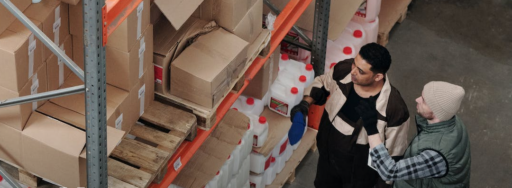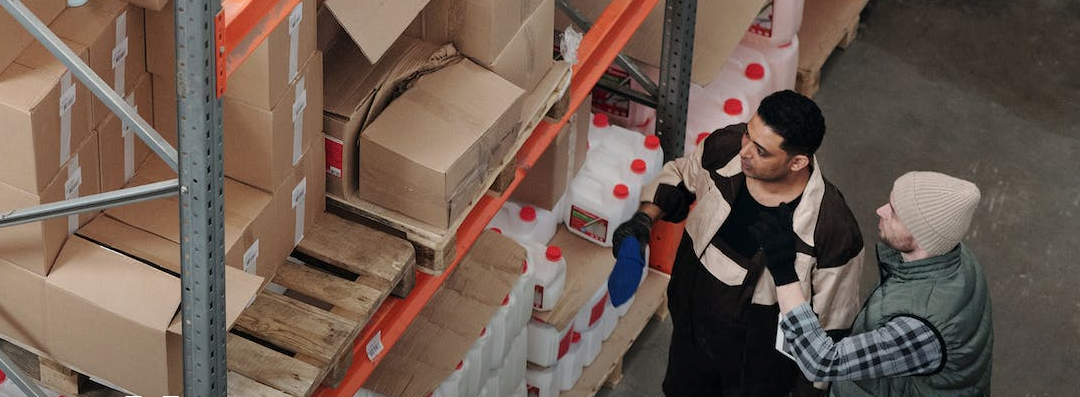As our CEO Marek said in an interview for Podnikajte.sk, when it comes to ERP and e-shops, there’s no need to invent a wheel. If your company has a proven system of business management with all the information you need, it’s enough to link it to the online store appropriately. Ideally via API. What can you transfer from ERP to an e-shop and how to prepare your system for the interconnection? We’ve put down a number of recommendations.
Corporate data is your greatest asset. Especially if it’s properly structured and securely stored in the ERP. Thanks to the subsequent connection of the system to the e-shop, you get even more. The ability to manage it from one place, data uniformity for online and offline sales or faster updates.
Question number 1: Can my ERP system be linked to the e-shop?
This question is the most important of all. Some ERPs don’t support the connection at all and force entrepreneurs to use their built-in e-shop system. However, it often doesn’t allow for any personalization or additional programming of extra functionalities.
The best ERPs, on the other hand, offer e-shops the possibility to connect via the Rest API. These include, for example, Helios, Money or Pohoda, which also have excellent support from their developers. Thanks to their connection via API, e-shops have an immediate response in the event of a change in data in the ERP and can also send its own data to it just as quickly.
What can be transferred to the e-shop from my ERP?
- Product information – E-shop takes the name of the product and its unique identifier from the ERP. Subsequently, it’ll add a more extensive description, photos, videos or PDF materials from its own administration.
- Warehouse status data – Thanks to a connection with a warehouse, e-shop will accurately display not only the availability of products, but also, for example, the plan of re-stocking from the supplier.
- Orders – Each order from an e-shop goes directly to the ERP, so that the store can subsequently receive and further forward accurate information about its receipt, payment and dispatch to the customer.
- Customers – Whether it’s B2B or B2C sector, the store will take all information about customers and their assigned roles or special discounts from the ERP. If your discount policy for a certain group of clients changes, it’s enough to adjust it in the ERP and the e-shop already applies new prices to each order. On the other hand, the store sends all information about newly registered customers to the ERP and you can subsequently find them in the system when buying in a brick-and-mortar store.
- Distribution options – If you offer certain products only to selected customers, you can easily define this setting within the ERP system. The e-shop will then make sure that the goods are always delivered to the right people.
- Prices – Whether it’s basic prices, quantity discounts or special promotions, all this information can be conveniently entered into the ERP. However, the basic price of the products should be determined without VAT, which the e-shop subsequently adds. It will then add any required discounts.
- Payments – All information about payments received through the e-shop is sent to the ERP, where you can conveniently track them.
- Documents – Invoices, credit notes or any other documents important for accounting can be generated by the e-shop and then sent directly to your financial department, without unnecessary additional export. This will save you a lot of paper, mistakes and make sure that nothing is lost.
- Bonus 1: Data evaluation – As there is a constant exchange of data between the e-shop and the ERP, both can subsequently evaluate and categorise this information.
- Bonus 2: Multiple e-shops from one ERP – If you have an extensive product database, it may be better for you to create several e-shops at once. In this way, each of them can focus on a relevant target group and offer customers exactly what they need. In addition, you can easily manage all e-shops from one place and you don’t have to worry about any unnecessary administration.
How to prepare for linking ERP with an e-shop?
Each ERP system has its own specifics. This also applies to data that the e-shop can receive from it. The first step in working with a development team is to review your ERP to understand what information they can work with and how they can make the most of its capabilities.
Subsequently, it’s necessary to propose what the structure of data acquisition will look like, that is, what data will be sent where, and what will be done with it thereafter. At this point, it’s particularly important to define the tasks that the individual components will perform. Especially if you use another accounting or warehouse system in addition to ERP.
It’s ideal if the ERP takes over as much of the “work” as possible. Therefore, we recommend that you make the most of it and, if supported, process your accounting, loyalty program and other business components in it. Of course, if some of its components aren’t comfortable to work with or they don’t work properly, then it’s better to move this data elsewhere so that you can function as efficiently as possible.
When this phase is complete, developers can recommend a few steps to ensure seamless system interconnection. Usually these are the following:
- Data structure adjustment: Information should be unified and organised. This applies in particular to prices (basic price excluding VAT, rounded to the same number of decimal places), warehouses, customer roles and product categories.
- Information about goods: Each product should have a name and a specific identifier in the ERP. Additional information, such as descriptions, images, etc., can be, but doesn’t have to be, entered directly in the e-shop environment. It depends on the capabilities of the ERP and the agreement with the development team.
- Communication with support: As ERP systems are often robust, they usually assign you a person or a support team when you purchase them. It’s important to alert them about the upcoming ERP and e-shop connection and ask for cooperation or recommendations for a smooth course.
- Communication with employees: If you’re in business, you probably have several dozen people with different positions under you. Moving or expanding into the online space can be a new and sometimes scary experience for them, combined with the fear of losing their job. Therefore, it’s necessary to explain to them how the eshop will intervene in or amend their current workload and what benefits it can bring them. With the right ERP and online store connection, the changes will be minimal, but at the same time, thanks to data centralization, their work will be easier, more automated and with a smaller error rate.
At bart, we strive to develop digital e-commerce solutions to extract as much data as possible from ERP. We know that the client is already well versed in its use and therefore we don’t want to unnecessarily change their established work procedures. At the same time, they have excellent control over the information stored in corporate management systems. In addition, the less information we store directly in the e-shop, the smaller the size of the project and the faster it works.
In short, linking a good and reliable ERP with an e-shop offers a minimum of risks and a large number of benefits. Therefore, we recommend it to everyone who already has ERP facilitating their business and would like to move their business further into the world of online services. What if you don’t have ERP or it doesn’t suit you? In that case, we’ll prepare everything in the e-shop so that you can do business as easily as possible.







